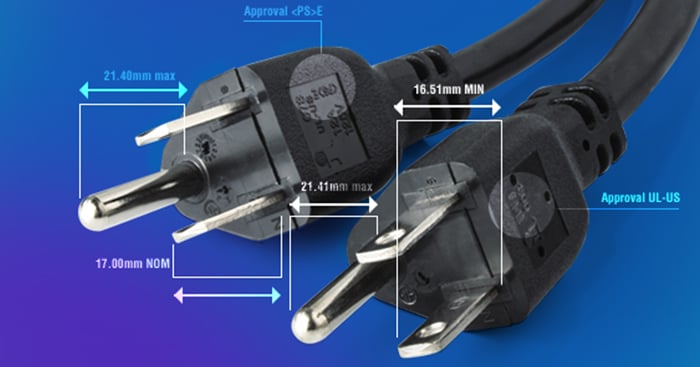North American & Japanese Electric Plug Difference
Posted on 10/12/20 3:08 PM

While North American and Japanese plugs look the same (e.g., the NEMA 5-15 and the Japanese JIS C 8303, the latter fitting snugly into an American socket) there are some critical differences. First, while the width of the blades are similar, the Japanese blades are slightly shorter.
Also, the mains power in America is 125V while in Japan it is 100V. The voltage difference will likely not be a problem, the wildcard is the Alternate Current frequency: in America its cycle is 60Hz, and in Japan it is both 50 and 60Hz depending on your location. If you plug a 50Hz device into a 60Hz main and the appliance has a heating element or a motor, then the motor could burn out, start a fire, or worse give the user an electrical shock.
Then there’s the conductor or wire sizes which are not identical. The Japanese sizes typically range from 0.75, 1.25, and 2.0mm2 and do not use the official AWG system. This approximates AWG sizes 18, 16, and 13 respectively. In Japan independent test labs do the actual approvals under Denan law per the JIS Standards, with an approval mark of “PSE” on the plug, and in North America UL and/or CSA does the testing for approvals with “UL” and “CSA” marks on the plugs in various combinations. If shipping to Japan, you must use a Japanese approved plug. Conversely, if shipping to North America, you must use a North American approved plug. Failure to utilize the appropriately approved cord or cord set could cause equipment to be delayed or quarantined in customs.





